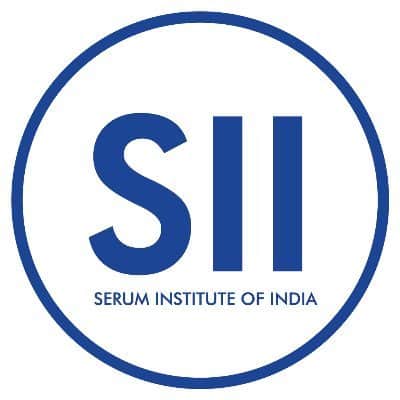In this interesting case study, Let’s deconstruct the Serum Institute Business Model to explain how the Business Model of the Serum Institute is structured.
The Serum Institute of India, a name that has been etched into the history of vaccine production, is the world’s largest vaccine manufacturer by volume. The company has played a crucial role in providing life-saving vaccines to millions across the globe at affordable prices. The success of the Serum Institute, however, did not happen overnight. It is the result of a well-thought-out business model, guided by strategic planning and driven by the vision of its founders, the Poonawalla family. In this blog post, we will delve into the business model of Serum Institute using Alexander Osterwalder’s Business Model Canvas as our guiding framework.
Alexander Osterwalder’s Business Model Canvas is a strategic management tool that offers a holistic view of a business, exploring its key elements such as value proposition, customer segments, channels, customer relationships, revenue streams, key resources, key activities, key partnerships, and cost structure. By analyzing these elements, we can gain a comprehensive understanding of the Serum Institute’s business model and how it has grown to become a global leader in vaccine production.
The Founding of Serum Institute
The story of Serum Institute of India began in 1966, when Dr. Cyrus Poonawalla, a visionary entrepreneur, decided to start a company that would make a significant impact on public health in India and around the world. Dr. Poonawalla’s initial idea was to create a business around horse racing and breeding, but he soon realized that the market for horses was shrinking as cars became more popular. With this realization, he shifted his focus to harnessing the power of biotechnology for the greater good.
Dr. Poonawalla observed that India was heavily dependent on importing vaccines, leading to high prices and limited access for many people. He saw an opportunity to create a self-sufficient vaccine industry in India that would not only serve the domestic market but also address global vaccine shortages.
To achieve this goal, Dr. Poonawalla founded the Serum Institute of India in 1966, with the mission to produce affordable, high-quality vaccines. His son, Adar Poonawalla, later joined the business and helped expand its reach, cementing Serum Institute’s status as a global leader in the vaccine industry.
The Serum Institute’s Business Model Canvas
- Value Proposition
The Serum Institute’s value proposition is centered around providing affordable, high-quality vaccines to customers across the globe. The company achieves this by leveraging its expertise in biotechnology, manufacturing, and supply chain management. The Serum Institute has been successful in producing a wide range of vaccines, from childhood immunizations to pandemic response vaccines like the COVID-19 vaccine. By offering these essential vaccines at affordable prices, the company has played a critical role in improving global public health.
- Customer Segments
Serum Institute’s primary customer segments include:
- Governments and public health organizations: These entities require large volumes of vaccines for national immunization programs and pandemic response efforts. The Serum Institute caters to these needs by providing affordable, high-quality vaccines in bulk.
- Private healthcare providers: Private hospitals and clinics also form a significant portion of Serum Institute’s customer base. These providers need vaccines for their patients and rely on the Serum Institute for a steady supply.
- Non-governmental organizations (NGOs): NGOs working in public health and humanitarian aid require vaccines for their programs. The Serum Institute partners with these organizations to provide vaccines at affordable prices and help reach underserved populations.
- Channels
The Serum Institute uses a combination of direct and indirect channels to distribute its vaccines. Direct channels include working closely with governments and public health organizations to supply vaccines for national immunization programs. Indirect channels involve partnering with distributors, NGOs, and private healthcare providers to ensure a wide reach of their products. The company also collaborates with international organizations like Gavi, the Vaccine Alliance, and UNICEF, which help distribute vaccines to low-income countries and regions with limited access.
- Customer Relationships
The Serum Institute maintains strong customer relationships through transparency, collaboration, and trust. By engaging in close collaboration with governments and public health organizations, the company ensures that its vaccines are tailored to the specific needs of each country or region. The Serum Institute also invests in continuous improvement of its products and processes to maintain high quality standards and ensure customer satisfaction.
- Revenue Streams
The Serum Institute’s revenue streams primarily come from the sale of vaccines to governments, public health organizations, private healthcare providers, and NGOs. The company focuses on offering vaccines at affordable prices, enabling it to tap into large volume sales and maintain a competitive edge in the market. Additionally, the Serum Institute generates revenue from research partnerships, technology licensing, and contract manufacturing services.
- Key Resources
The Serum Institute’s key resources include:
- Manufacturing facilities: The company’s state-of-the-art manufacturing facilities enable it to produce large volumes of vaccines while maintaining high quality standards.
- Skilled workforce: A skilled workforce with expertise in biotechnology, manufacturing, and supply chain management is crucial to the success of the Serum Institute.
- Intellectual property: The company’s extensive portfolio of patents, licenses, and proprietary technology helps maintain a competitive advantage and protect its innovations.
- Strong brand reputation: Serum Institute’s reputation as a global leader in vaccine production helps attract customers and partners.
- Key Activities
The Serum Institute’s key activities include:
- Vaccine research and development: The company invests heavily in R&D to develop new vaccines and improve existing ones.
- Manufacturing: Large-scale vaccine production is central to the Serum Institute’s business model, allowing it to meet global demand and offer affordable prices.
- Quality control and assurance: The company maintains strict quality control and assurance processes to ensure the safety and efficacy of its vaccines.
- Supply chain management: Efficient supply chain management is essential for the timely delivery of vaccines to customers worldwide.
- Collaboration and partnerships: The Serum Institute actively engages in strategic partnerships with governments, NGOs, and other organizations to broaden its reach and improve public health outcomes.
- Key Partnerships
The Serum Institute has forged numerous key partnerships to support its mission and enhance its business model. Some of these partnerships include:
- Gavi, the Vaccine Alliance: Serum Institute has partnered with Gavi to supply vaccines at affordable prices to low-income countries, helping to improve global vaccination coverage.
- World Health Organization (WHO): The company collaborates with WHO to develop and distribute vaccines for pandemic response and other public health emergencies.
- Bill & Melinda Gates Foundation: The foundation has supported the Serum Institute in the development and distribution of affordable vaccines, particularly in low-resource settings.
- AstraZeneca: The Serum Institute partnered with AstraZeneca to manufacture and distribute the COVID-19 vaccine, Covishield, in India and other countries.
- Cost Structure
The Serum Institute’s cost structure is primarily driven by:
- Research and development: The company invests heavily in R&D to develop new vaccines and improve existing ones.
- Manufacturing: Large-scale vaccine production requires significant investment in equipment, materials, and personnel.
- Quality control and assurance: Ensuring the safety and efficacy of vaccines necessitates rigorous testing and monitoring, contributing to the company’s cost structure.
- Distribution and logistics: The global distribution of vaccines requires investment in cold chain storage, transportation, and other logistics infrastructure.
The Serum Institute’s success as the world’s largest vaccine manufacturer by volume can be attributed to its well-thought-out business model, guided by Alexander Osterwalder’s Business Model Canvas. By focusing on a value proposition centered around providing affordable, high-quality vaccines, the company has made a significant impact on global public health. Its customer segments, ranging from governments and public health organizations to private healthcare providers and NGOs, have allowed the Serum Institute to reach millions of people worldwide.
Through direct and indirect channels, the company ensures the efficient distribution of vaccines to those who need them most. By fostering strong customer relationships and maintaining high quality standards, the Serum Institute has established itself as a trusted partner in the global vaccine market.
The company’s revenue streams are primarily driven by the sale of vaccines, research partnerships, technology licensing, and contract manufacturing services. Its key resources, such as state-of-the-art manufacturing facilities, skilled workforce, and intellectual property, provide a solid foundation for its operations.
The Serum Institute’s key activities and partnerships, including R&D, manufacturing, quality control, supply chain management, and collaboration with international organizations, have enabled it to respond effectively to global vaccine demands and contribute to improved public health outcomes.
Lastly, the company’s cost structure is primarily driven by investments in R&D, manufacturing, quality control, and logistics. By managing these costs effectively, the Serum Institute has been able to offer affordable vaccines and maintain a competitive edge in the market.
In conclusion, the Serum Institute of India’s business model, as analyzed through Alexander Osterwalder’s Business Model Canvas, has been instrumental in its growth and success. By understanding these key elements, entrepreneurs and business leaders can glean valuable insights into the strategies and principles that have guided the Serum Institute’s journey to becoming a global leader in vaccine production.
Did you know? Corporate teams like to use our coworking space in Bangalore.
Learn more about our coworking space on YouTube where we talk about a variety of topics including personal finance, entrepreneurship, business and life.
Did you know? We also have a private theatre in Bangalore.




